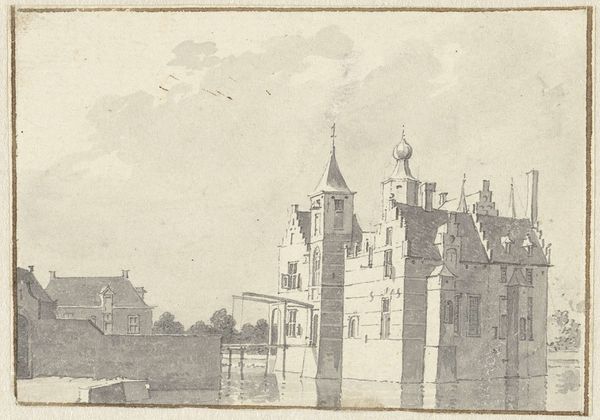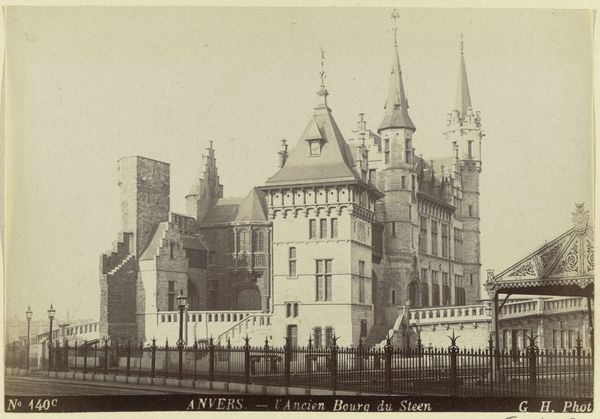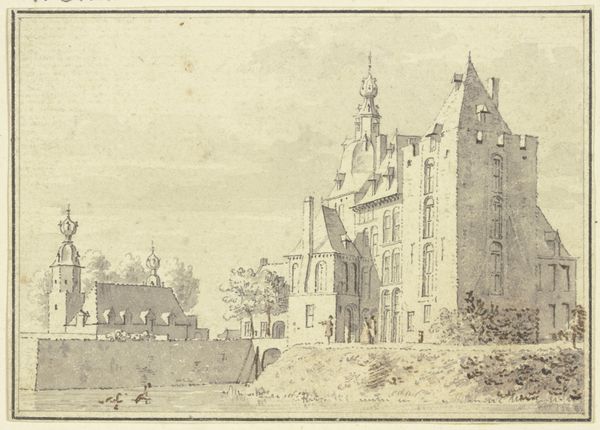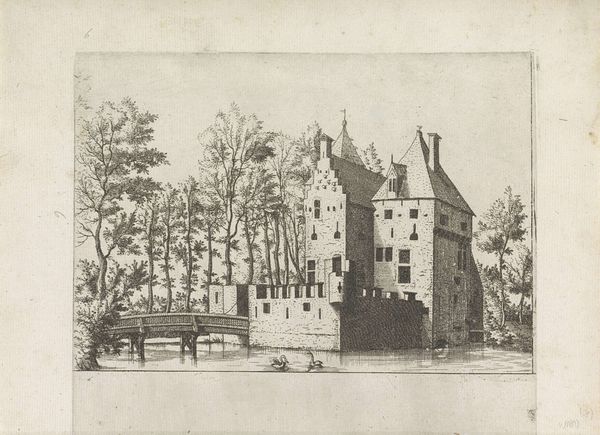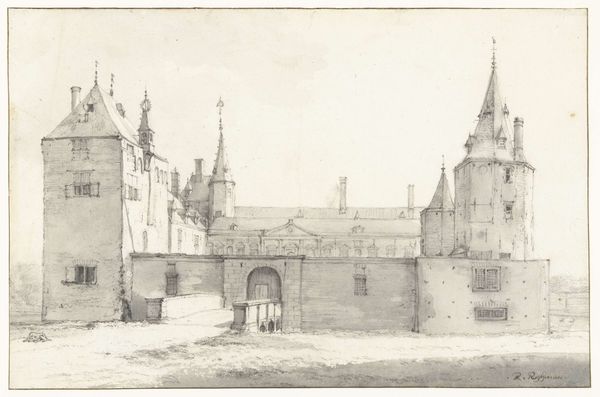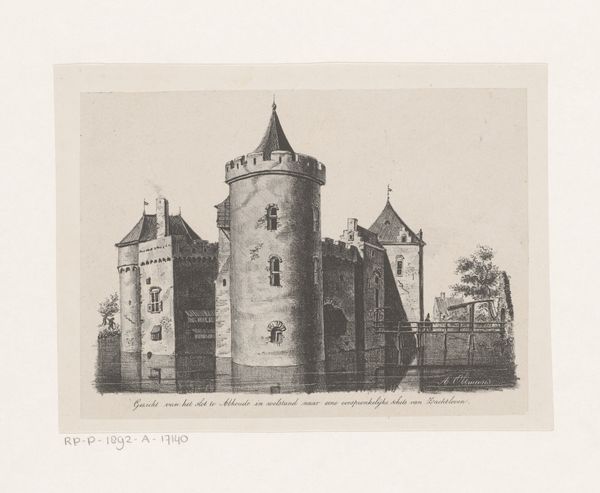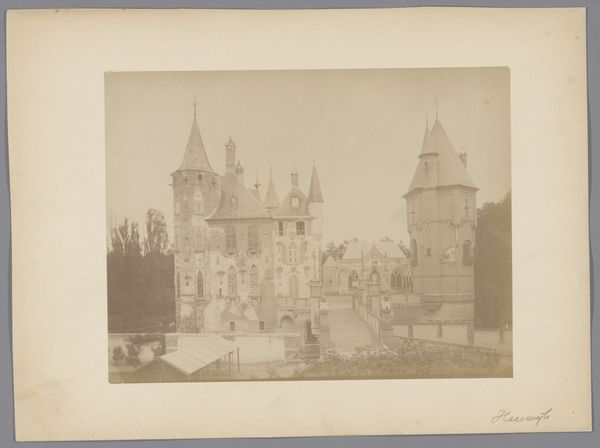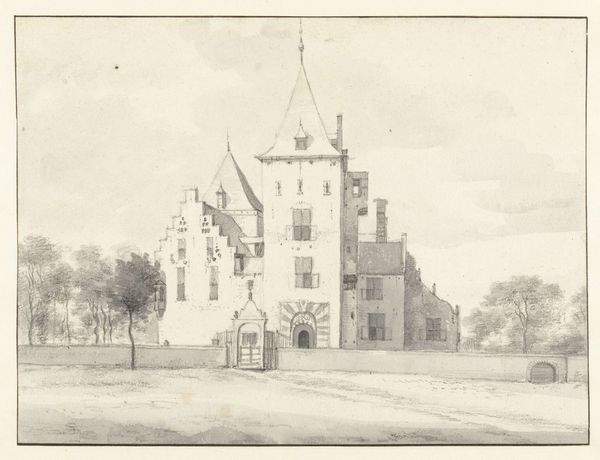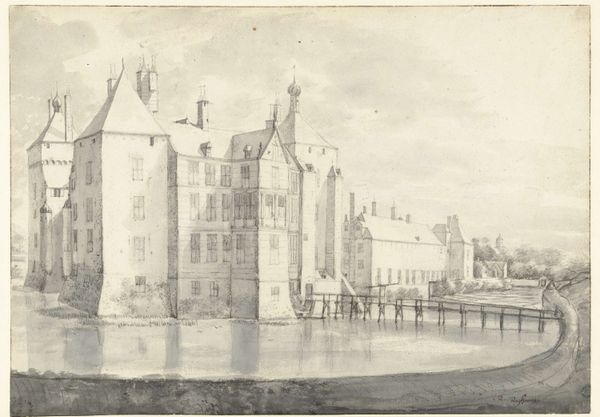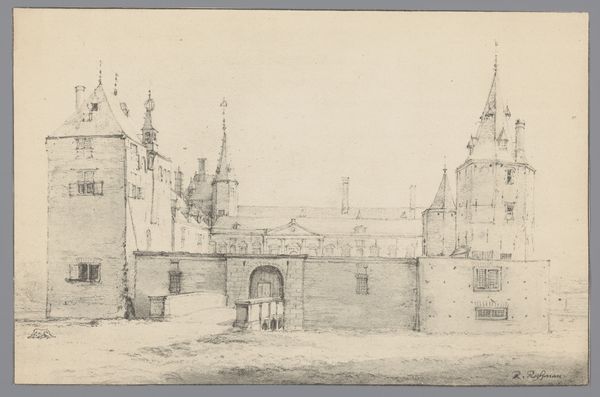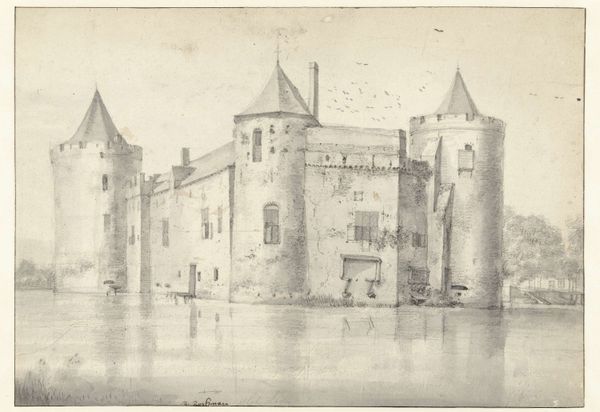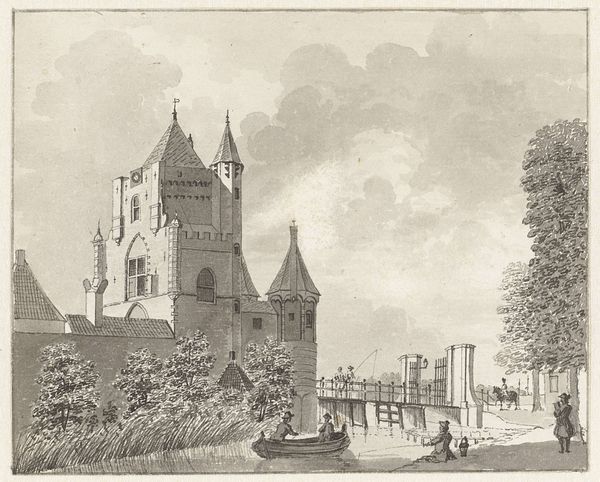
drawing, paper, ink
#
drawing
#
baroque
#
dutch-golden-age
#
landscape
#
paper
#
ink
#
cityscape
Dimensions: height 404 mm, width 515 mm
Copyright: Rijks Museum: Open Domain
Curator: Roghman’s drawing of Swieten Castle, executed around 1646-47, offers us a glimpse into the Dutch landscape of the Golden Age, now preserved in the Rijksmuseum collection. What strikes you most about this ink drawing? Editor: There’s a dreamlike quality to it, almost as if it were emerging from the mist. The starkness of the castle's form reflected in the water lends it a ghostly air, doesn’t it? A monument to permanence adrift in impermanence. Curator: It's true; the composition draws you in. But consider the social context—castles like these were not merely aesthetic features of the landscape. They symbolized power, lineage, and the deep roots of the aristocracy in Dutch society, a class in slow decline during the Golden Age. Editor: I’m interested in the detail of the pigeon holes clearly integrated in the facade. Pigeons have historically symbolized peace, but also served as messengers. Integrating their homes so obviously implies the castle's connection to communication, or perhaps a hope for serenity during tumultuous times. Curator: An astute observation. Roghman's work came at a time when landscape art was rising in prominence. Instead of pure topographical accuracy, artists were beginning to use these settings to explore national identity and to perhaps project a sense of stability amidst political upheaval. Editor: Precisely, that blending of external representation and internal symbolism fascinates me. Look how the stoic, almost severe architecture contrasts with the gentle ripple of the water, reflecting not only an image, but a deeper, perhaps turbulent emotional state. Curator: Roghman’s choice of medium, ink on paper, would have allowed for the ready reproduction and dissemination of such images to an eager market. It also democratizes art, giving citizens of all means the capacity to engage and express with these images. Editor: So even in its time, this image wasn’t just a landscape; it was a tool. After our brief study, what is it that speaks most clearly? Curator: To me, it is how the Dutch Golden Age was using its land, history and identity to stake a place on the world stage, and the function art had in enabling those ideas to become common and shared. Editor: I’m left considering how symbols of status and strength can so easily transform into images of contemplation and quiet beauty, as seen in the reflected towers. It’s a dance between power and the poetic.
Comments
rijksmuseum about 2 years ago
⋮
In this view of Swieten Castle Roghman placed emphasis on rendering the architecture. He depicted the dozens of dovecotes on the side wall with notable precision, and not surprisingly, for in the 17th century the right to keep large numbers of pigeons was limited to the aristocracy and higher clergy.
Join the conversation
Join millions of artists and users on Artera today and experience the ultimate creative platform.
